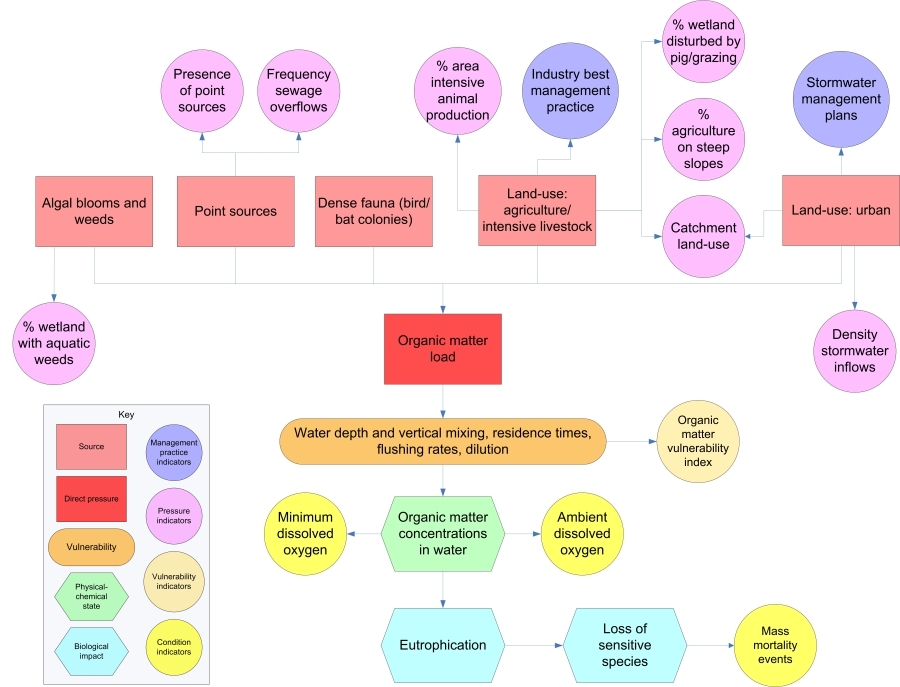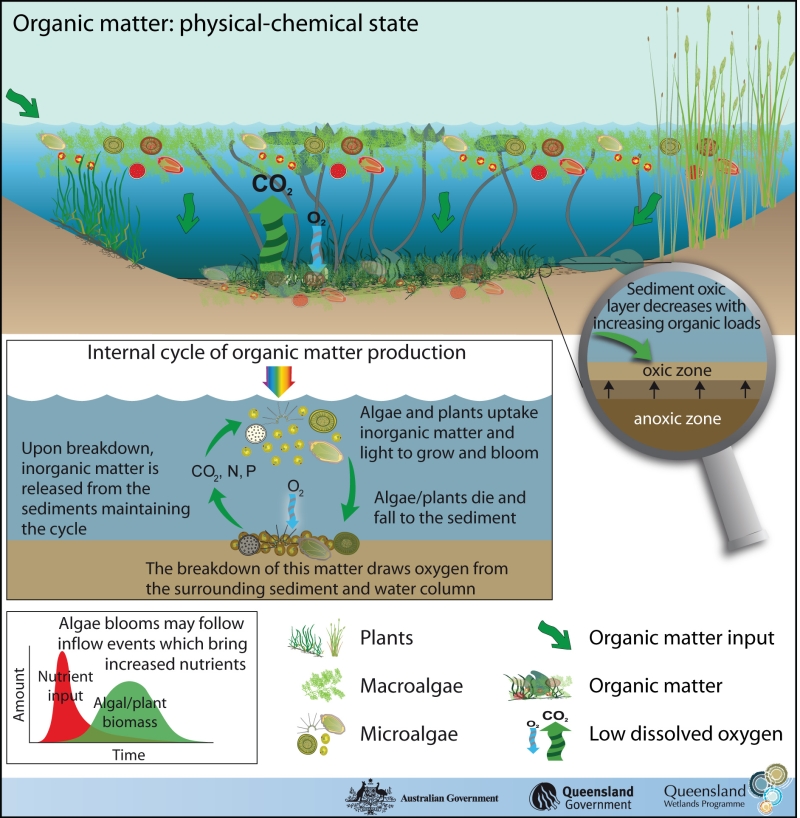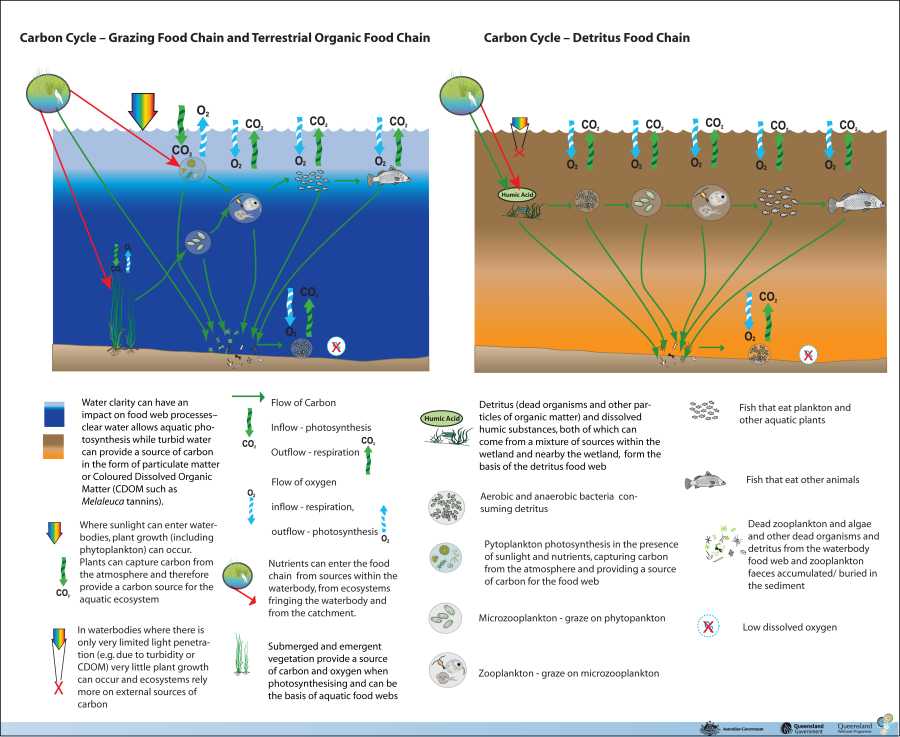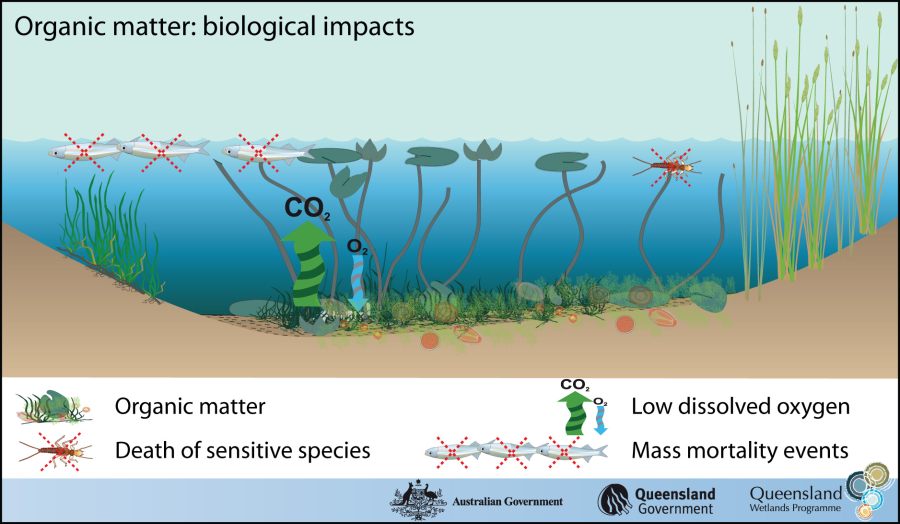|
|
Organic matter – StateOrganic matter – StateFlow chart showing the major elements associated with organic matter management
Click on elements of the flow chart or select from the tabs below
The breakdown of organic matter can result in low dissolved oxygen (e.g. hypoxia or anoxia) in the water (eutrophication). Sediment oxygen demand is higher when production is higher. Algal (both macroalgae and microalgae) blooms and increased plant growth occur in areas with increased nutrients and high light availability.
The breakdown of organic matter can result in low dissolved oxygen (e.g. hypoxia or anoxia) in the water (eutrophication). Animals that are sensitive to low dissolved oxygen and cannot move to areas with better conditions may die, often in mass mortality events.
Last updated: 22 March 2013 This page should be cited as: Department of Environment, Science and Innovation, Queensland (2013) Organic matter – State, WetlandInfo website, accessed 8 May 2025. Available at: https://wetlandinfo.des.qld.gov.au/wetlands/management/pressures/lacustrine-palustrine-threats/organic-matter/state.html |

 — Department of the Environment, Tourism, Science and Innovation
— Department of the Environment, Tourism, Science and Innovation





